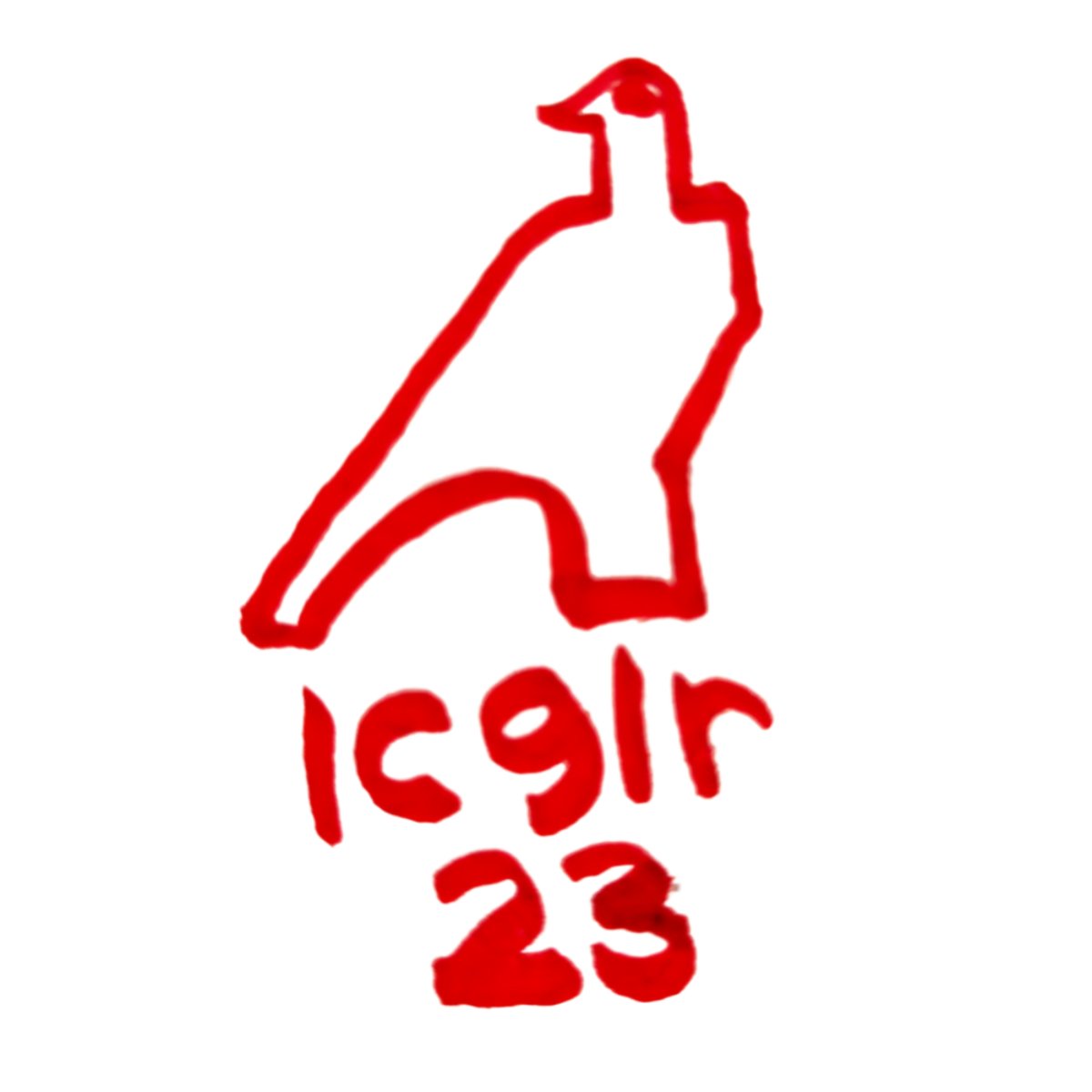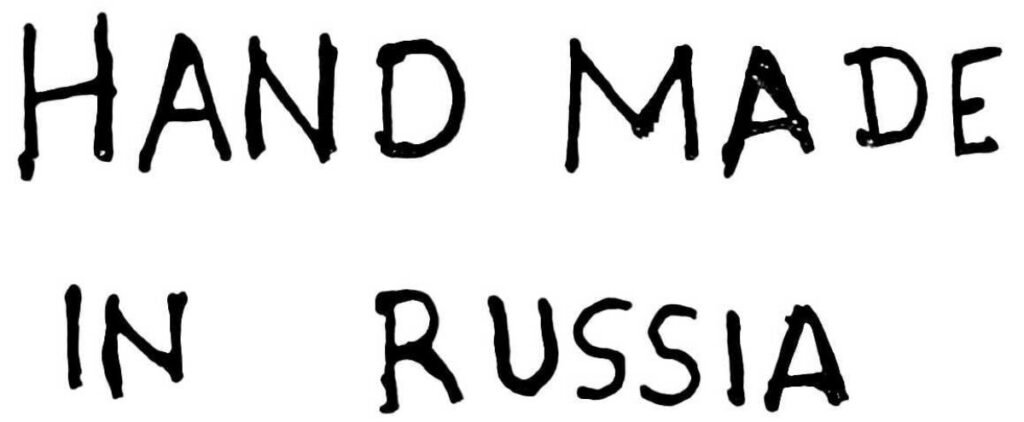Gzhel pottery is one of the most exotic of Russian ceramics, known for its iconic white porcelain and intertwined designs. But with the ceramics market full of many new white-blue pottery pieces, I’ve seen many collectors struggling to identify REAL Gzhel pottery.
That’s because reading Gzhel pottery’s Russian and Cyrillic script marks & letters is difficult. But not when you have this guide! Here, you’ll learn all about detailed & graphical Gzhel pottery marks, potters’ signs, factory marks, values, and much more!
Key Takeaways
- Old Gzhel pottery has three types of marks: Gzhel trademarks, maker marks (artist signs & factory stamps), and material marks on its base or back.
- Vintage Gzhel pottery marks use raised rubber stamps and blue, green, or brown inks, depending on the manufactory.
- Different Handmade, Faience, and Glossy Porcelain stamps will tell you the materials and finishes of your Gzhel Pottery.
- You may also find ‘first class’ marks, assigned by Gzhel makers on good quality pottery.
Brief History of Gzhel Pottery & Its Marks

Gzhel pottery is the iconic Russian style white & blue pottery made in over 30 villages to the south of Moscow. This art, centered initially around hand-painted ceramic pottery, evolved into complex designs when the Tzar Aleksey Mikhallovich traded them as medical jars!
After about 30 years of unbranded pottery production, local potters started using impressed Gzhel marks in 1818. A few years later, Gzhel potters introduced Cyrillic script location and ‘Handmade’ marks, especially for early Gzhel plates and vases.
Initially, the pottery was ceramic-based. But Gzhel potters switched to white porcelain production after a drill from the Turygino village’s artisan training group (now Union Gzhel).
During the mid-20th century, when Gzhel pottery started losing its prominence, artists like N.I. Bessarabova breathed new life into it with the signature two-tone white and blue pottery style.
Today, Gzhel pottery is made in many factories, of which the JSC (Gzhel Porcelain Factory), Lukutin & Kolomna factory form a majority!
Identifying Important Gzhel Pottery Marks
Gzhel pottery is known for its Russian folk art-inspired distinctive blue designs on a white glaze background. But, the newer pieces also have different vibrant colors.
Besides, many other local or Russian ceramics may also have a similar blue and white design. That’s why, Gzhel pottery marks become a crucial tool to identify the real Gzhel pottery.
You can also date old Gzhel ceramics by the raised dating, material, and maker marks on their base or back. Let’s learn about all these Gzhel Pottery Marks in detail:
1. Gzhel Trademarks & Stamps
You can easily identify an authentic Gzhel pottery with one of the five Cyrillic script trademarks, a duck/swan, XK, double-headed eagle, or crown mark on its underside.
Cyrillic scripts are challenging to read, but you can verify the logo by its patterns or use Google Translate, too.
These Gzhel marks are primarily blue, brown, green, or yellow on a white background (base), often with a tin and rubber mold mark, giving it a raised look.
Below, I have drawn the five most popular Gzhel marks for easy identification and dating:
| Gzhel Pottery Trademarks | Years | Gzhel Pottery Age |
 | 1950 – 1960 | 63 – 73 years |
 | 1972 – 1986 | 37 – 52 years |
 | 1991 & Onwards | Around 30 years |
 | 1998 Gzhel Mark (known as the Two-headed Crowned Eagle mark) | 25 years & Above |
You can also estimate the age of a Gzhel piece using its visible features, as follows:
- 1500s – 1600s: Inspired by the everyday, true-to-life Renaissance art, Gzhel pottery used local earthenware & white slip floral, geometric, or animal designs. Popular Gzhel products from this era include pots, bowls, plates, and tiles.
- 1700s: Gzhel potters switched to faience (superior white earth pottery) in the 18th century. They also introduced blue, green, yellow, or brown tin glazes for their vase, candlestick, chess, and porcelain figurine collections.
- 1850s: The mid 19th century Gzhel pottery is identifiable by its white and cobalt-blue patterns. Pottery like tea sets, souvenirs, and statuettes bear blue-white Gzhel paintings or mythological designs.
- 1900s: In the 20th century, Gzhel artisans transitioned to baked porcelain and brown, green, or orange majolica plates, figurines, vases, and dinnerware, each with applied historical and animal designs.
It’s advisable to clean your Gzhel pottery items with a diluted solution of warm water and dish soap or powder to make the marks stand out.
2. Potters & Factory Marks
A few days back, I got an email asking for tips on identifying the maker of a Gzhel piece. Now, the best way to identify Gzhel pottery makers is by the potter marks or signs.
In the pre-1800s, unmarked Gzhel ceramics mainly belonged to local potters, so it’s quite difficult to trace them. But you can find the following Gzhel potters signs painted on Gzhel pottery bottom or back:






During the mid-20th century, popular artists like A. B. Saltykov and N. I. Bessarabova revived the Gzhel pottery. N.I. Bessarabova, aka Natalya Bessarabova, introduced the two-tone blue and white pottery style, but her signed pottery is quite rare.
Besides, the post-1800s Gzhel pottery items also have an etched factory mark depicting their plant name, location, and other quality checks. I’ve prepared a list of such marks (hand-drawn for reference) and their meaning.
| Old Gzhel Pottery Factory Marks | Gzhel Pottery Factory Name |
 | Turyginsky Porcelain Factory (1950 – 1960) |
 | Gzhel Porcelain Factory Mark |
 | Rechitsa Factory Mark |
 | Dulevo Porcelain Factory |
 | Leningradsky Opytny Zavod (Leningrad Experimental Factory) |
You may also find the following “Handmade in Russia” and “Handpainted in USSR” location stamps, along with the Cyrillic Gzhel factory marks.


3. Material & Quality Marks
Apart from potter marks, old Gzhel pottery might have red, blue, or green material stamps for the materials & firing process used for the porcelain piece.
These marks can tell you whether a Gzhel piece is handmade, high-quality porcelain, faience, or glossy porcelain. Some pieces were also marked ‘1c’ to distinguish them as ‘first-class’ pieces.
| Gzhel Pottery Material Marks (Hand-Drawn) | Material |
 | Handmade Porcelain |
 | Faience (Glossy Ceramic) |
 | Glossy Porcelain |
 | First Class (best quality) porcelain |
Expert Tips to Spot Fake Gzhel Pottery

Still not sure if your white and blue pottery is real Gzhel or not? Don’t worry! Fake Gzhel pottery has some distinctive features that you can easily spot.
- Light Weight: A real Gzhel piece with high quality porcelain is heavy. So if a pottery piece of a similar size or shape as an original Gzhel piece weighs less, it’s likely fake.
- New Fake Marks: Bogus Gzhel pottery doesn’t have factory or potter marks. Instead, they may have cheaper cream or beige-colored clay sides with chipped glazes & ‘stoneware’ stamps. Some might even have ‘Made in China’ or ‘Japan’ marks in English or Chinese instead of “Handmade In Russia” marks.
- Varying Copied Marks: Fake or reproduced Gzhel pottery could have real-like 2D painted or marker marks but with visible spelling, font, color, and size changes.
Finding the Value of Old Gzhel Pottery

Gzhel pottery from the 1800s or 1900s is still worth around $10 – $200, with larger or rarer pieces fetching $300 – $500. The value of a Gzhel pottery piece depends on the following factors:
- Authenticity: Genuine Gzhel pottery with renowned Gzhel artist signs or clear factory marks is greatly sought-after by collectors.
- Condition: Gzhel porcelain with a high-quality glaze and well-preserved painted details are more valuable. Severe wear and tear, chips, and cracks depreciate the pottery’s value.
- Age & Rarity: Gzhel pieces produced before the 20th century can fetch higher prices as they are extremely old and hence, rare to find.
- Item Type: The type of Gzhel pottery also greatly affects its value. For example, a Gzhel figurine, statuette, vase, or samovar can sell for up to $200 – $300. In contrast, kitchenware, like jugs, cups & saucers, etc., is commonly worth around $10 – $150.
Also, remember that Gzhel pottery sets will generally be slightly more expensive than individual pieces of kitchenware or serveware. Here’s a handy Gzhel value guide for other secondary Gzhel pottery products:
| Vintage Gzhel Pottery Products | Estimated Value |
| Water Jugs | Less than $50 |
| Sugar Bowls & Holders | $10 – 70 |
| Salt & Pepper Shakers | $30 – 170 |
| Creamers | $10 – 60 |
| Condiment Sets | Less than $100 |
Old Gzhel pottery might not have dates, but it has many other unique marks that can help you age, identify, and appraise it rightly! This guide will help you do so using mark references.
So, use this guide to spot and compare such marks, and let me know your findings in the comments! You can also learn tips for identifying and valuing antique China crockery, Frankoma pottery, and Hull pottery!
Note: This article is intended for informational, educational, and entertainment purposes only. Some images are illustrative and may not represent actual brands, products, or related entities. All trademarks, product names, brand logos, packaging, and other intellectual property referenced remain the exclusive property of their respective owners. Any brand mentions or references are provided solely for descriptive and educational context and do not imply any formal or commercial association.










